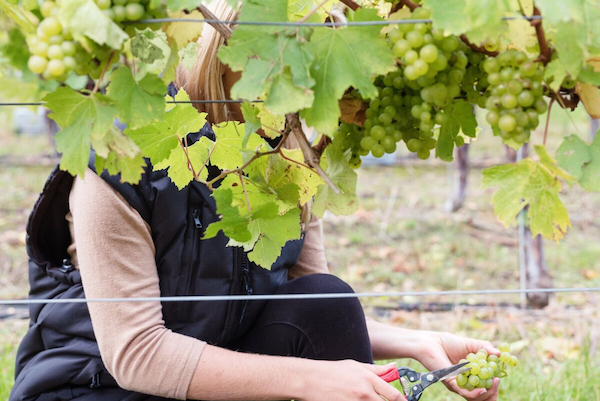
Talking about the weather is one of the great British pastimes and it seems serendipitous to be writing this piece amid a heatwave. Will this impact our growing season? Well, of course, the weather dictates our entire production cycle like any other agricultural business but for some reason, wine is often seen more as a commodity rather than an agricultural product by consumers.
The reason that my family decided to focus on the production of traditional method sparkling wines in England was the climate and geology. In fact, the climate probably factors more highly than the geology here as we are right on the edge of viable viticulture, a very cool climate. Our unique climate enables us to create world- class sparkling wines but it also carries a high commercial risk factor that needs to be properly assessed by those considering entering the industry.
The only thing which any viticulturist can be certain of in England is that there is no certainty in a growing season. No two seasons are the same and bring their unique challenges so a balance of good planning and flexibility is critical. Having the relevant expertise managing the vineyard is essential. It is the vineyard manager, not the winemaker who determines quality after all.
So what weather challenges have we faced so far this year? After a glorious start to the growing season in early April with temperatures regularly climbing above average, many growers were caught out by some very late frosts. Frosts in May can reduce yields to nothing in prone sites where no prevention measures are taken. Fortunately, our growers took all the necessary steps to avoid this, with bougies (smudge pots) being the most common method of protection.
The next key stage in the growing season is flowering that dictates fruit set and enables us to start to assess the likely yields for the season. This usually occurs in early July but due to the warm start to the season that we are all thankful for during lockdown, we began flowering in mid-June. The success of flowering and fruit set is of course determined by the weather with warm and dry creating the best possible outcome. It was during this process that we experienced a change in the weather with a drop in
temperature and more cloud cover throughout July, even some rainfall which has been absent since the deluge we had over the winter. One question that we are always asked at this time of year is about the importance of rainfall
and the quick answer is that it is not essential but at the right time can be very helpful but at the wrong time it can reduce yields.
This brings us to the here and now. A heatwave followed by rainstorms that will hasten the ripening phase and may help increase berry size respectively.
Harvest is likely to start early again this year due to the weather (September) but is not going to be the bumper yields we have seen in the previous two vintages. This is a relief commercially due to the impact of COVID-19 on sales and is the consequence of climatic conditions during the 2019 growing season as the weather at certain times in one season can impact the yield the following year.
The weather still has the potential to significantly influence the vintage despite being only six weeks away so until the grapes are safely picked, pressed and in the tanks, we cannot be certain of anything.
Tamara Roberts is CEO
of Ridgeview Wine Estate, producers of the award-winning English sparkling wine. www.ridgeview.co.uk





